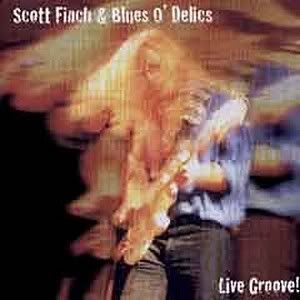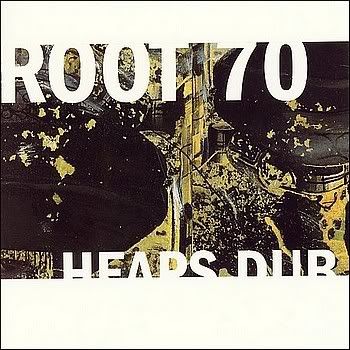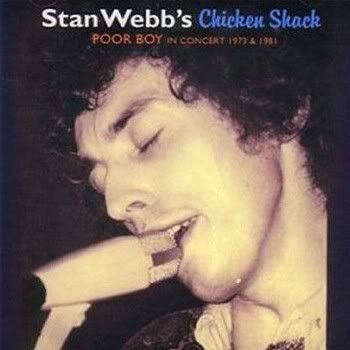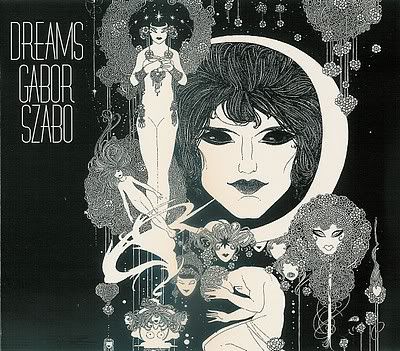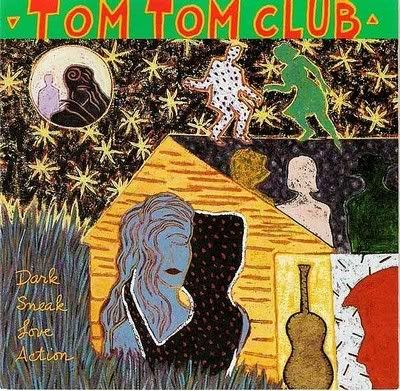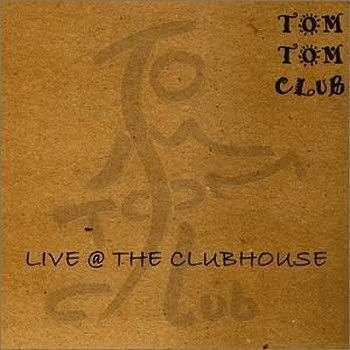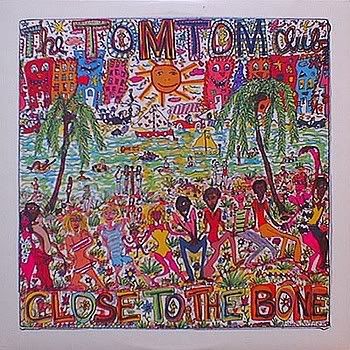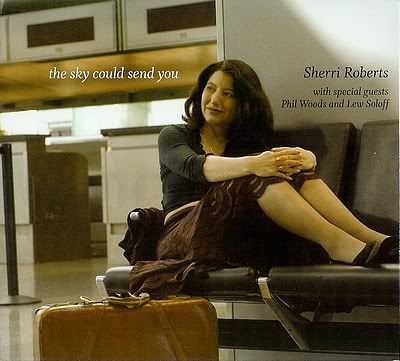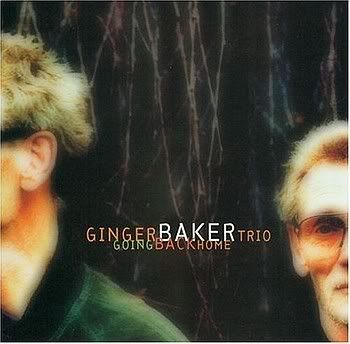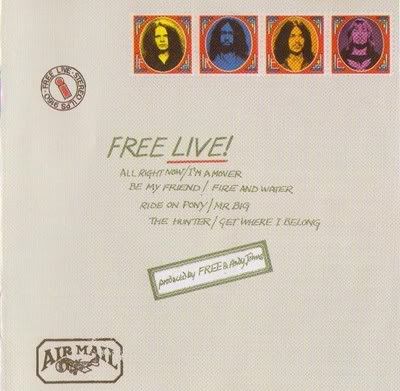
Free - Free Live - 1971 - Island/A&M
Although Free made excellent studio records, Free "Live" is perhaps the best way to experience the band in all its glory. Led by singer-guitarist Paul Rodgers and lead guitarist Paul Kosoff, the band swings through nine songs with power, clarity, and a dose of funk. Of course, the hit single "All Right Now" is gleefully extended, much to the audience's and listener's delight. Superbly recorded by Andy Johns, this is one of the greatest live albums of the 1970s. © Matthew Greenwald, © 2007 All Media Guide, LLC. All Rights Reserved
ORIGINAL TRACKS
"All Right Now" (Fraser, Rodgers) - 6:24
"I'm a Mover" (Fraser, Rodgers) - 3:46
"Be My Friend" (Fraser, Rodgers) - 5:56
"Fire and Water" (Fraser, Rodgers) - 3:56
"Ride on a Pony" (Fraser, Rodgers) - 4:30
"Mr. Big" (Fraser, Kirke, Kossoff, Rodgers) - 6:13
"The Hunter" (Cropper, Dunn, Jackson, Jones, Wells) - 5:29
"Get Where I Belong" (Fraser, Rodgers) - 4:19
BONUS TRACKS (ON 2002 Umvd Import REISSUE)
"Woman"
"Walk in My Shadow" (Live Version)
"Moonshine"
"Trouble on Double Time"
"Mr. Big" (Live Version)
"All Right Now" (Live Version)
"Get Where I Belong" (Alternative Studio Version)
Album Info.
Tracks 1 - 8 constitute the original album, FREE LIVE! All of these original 8 tracks, except "All Right Now" & "Get Where I Belong", were recorded live at Fairfield Halls, Croydon in September 1970. Track 1, "All Right Now", was recorded live at Sunderland Locarno - Fillmore North in January 1970. Track 8, "Get Where I Belong", is an outtake from the March, 1971 "My Brother Jake" studio sessions. This song carries a gentle tone of wistful regret and a plea to "Help me to repay things I have done wrong." Tracks 9 - 14 are bonus tracks recorded from both the Sunderland & Croydon shows, while Track 15 is an alternative take of "Get Where I Belong" recorded at Island Studios on March 26, 1971.
BAND
Paul Rodgers - vocals
Paul Kossoff - guitar
Andy Fraser - bass
Simon Kirke - drums
BIO
Members include John "Rabbit" Bundrick (born in the United States; joined group, 1972), keyboards; Andy Fraser (born on August 7, 1952, in London, England; left group, 1972), bass; Simon Kirke (born on July 28, 1949, in Shrewsbury, England), drums; Paul Kossoff (born on September 14, 1950, in London, England; died on March 19, 1976, in New York, NY), guitar; Paul Rodgers (born on December 12, 1949, in Middleborough, England), vocals; Tetsu Yamauchi (born on October 21, 1947, in Fukuoka, Japan; joined group, 1972), bass.
Free is perhaps best remembered for the 1970 hit single and classic rock radio staple "All Right Now," which seamlessly blends the band's blues roots with an accessible pop and hard rock sensibility. The band was initially categorized among such bands of the British blues-rock genre of the late 1960s and early 1970s as Humble Pie, Fleetwood Mac, and Savoy Brown. Free, however, was celebrated by critics and the record-buying public for the tasteful and sinewy guitar work of Paul Kossoff and the emotionally charged vocals of Paul Rodgers. The group crested with the release of the 1970 album Fire and Water, which contained "All Right Now," but they were unable to sustain their creative spark or commercial viability due to Kossoff's consistent drug abuse. They first disbanded in 1971, but re-formed in 1972 to record the 1973 release Heartbreaker before disbanding permanently that same year.
Aside from their guaranteed position in the classic rock pantheon as the creators of one of the most popular singles of the 1970s, Free generally are considered the progenitors of a genre of commercially successful blues-rock, a genre that eventually included Bad Company, featuring Free's Rodgers and drummer Simon Kirke, and Foreigner. These bands eschewed the harder metal sound of such bands as Led Zeppelin to focus instead on lyrics that appealed to both genders, sung in rough-hewn voices. The formula proved successful, as Free, Bad Company, and Foreigner--and to a lesser extent Frankie Miller's Full House, Sharks, and the Baker Gurvitz Army--all enjoyed packed concert venues and vast album sales.
Different Backgrounds
Free was originally a quartet comprising Rodgers, Kossoff, Kirke, and bassist Andy Fraser. Rodgers was the son of a dock worker in Middleborough, England. His father bought him a guitar when he was twelve, and he played in a succession of bands, including the Titans, the Intrepids, the Roadrunners, the Wildflowers, and Brown Sugar. Kirke was raised by a former merchant seaman and factory worker who moved his family to Clun, a small village in Shropshire. His public performing career began with him drumming along to records played at the local village hall by a bus driver who doubled as a disc jockey. Kirke played in the bands Maniac and Heatwave before relocating to London. Fraser's father was the offspring of a black slave and a Scottish plantation owner who lived in British Guyana. Fraser told Other writer Phil Sutcliffe that his father "had a massive chip on his shoulder," which prompted him to abandon his family when Fraser was six. His father's absence and his racial makeup caused Fraser to suffer his classmates' prejudiced epithets growing up in Roehampton, West London. He received piano lessons, but preferred playing guitar, which he tuned down to sound like a bass. By the time he was 13, Fraser was playing reggae, calypso, soul, and rhythm and blues music in London clubs.
In 1967 Fraser befriended Sappho Korner, the daughter of prominent London blues and jazz band leader Alexis Korner, who was to play a significant role in the formation of Free by introducing several members of the band to Fraser, including Paul Kossoff, as well as helping them secure prominent gigs and a recording contract. Kossoff was the son of British actor David Kossoff. The elder Kossoff encouraged his son's interest in music by introducing him to the music of Ray Charles and Big Bill Broonzy as well as taking him to a Tommy Steele concert when the younger Kossoff was eight. Kossoff abandoned nine years of classical training to play blues rock after seeing Eric Clapton perform with John Mayall's Bluesbreakers in 1965.
In 1968 London's music scene was awash in psychedelic permutations of American blues music. Kossoff had joined the blues band Black Cat Bones, which caught the attention of Alexis Korner after witnessing the band lend studio support to American blues pianist Champion Jack Dupree. Kirke had seen Black Cat Bones' live performance with Dupree, and he convinced Kossoff to allow him an audition for the band's drum chair. Kirke replaced the band's drummer and accompanied the band on the Dupree sessions; the pianist reportedly complimented the drummer when he "growled, 'Hey, this guy can play!'" according to Sutcliffe.
Christened by Alexis Korner
Free was formed in 1968 after Kossoff heard Brown Sugar lead singer Paul Rodgers. Joined by Kossoff's bandmate Kirke on drums, the trio recruited sixteen-year-old bass player Andy Fraser from British blues legend John Mayall's Bluesbreakers, and they became a quartet. Alexis Korner recommended Fraser and also provided the group with the name Free. "We set up at lunch as separate people and by four in the afternoon we were a band," Rodgers told Sutcliffe. Based upon his experience in Mayall's Bluesbreakers, Fraser proclaimed himself the leader of Free, astutely booking concerts and negotiating contracts. After a brief period of songwriting and rehearsing, Free became the opening act for Korner's band. Korner told Sutcliffe: "I liked the fact that you had room to hear the sound round the note instead of just the note itself.... They understood space and they understood writing blues." Korner introduced the band to Island Records executive Chris Blackwell, who recommended that the all-teenaged band change its name to the Heavy Metal Kids. They refused, and Blackwell eventually conceded.
Rodgers and Fraser began writing songs together after the former took ill and was given a place to stay in the home of Fraser and his mother. The duo collaborated on the songs "I'll Be Creepin'," "Mourning Sad Morning," and "Fire and Water." "It came naturally," Fraser told Sutcliffe. "I think initially Paul was strongest on the lyrics. His songs were very vocal-based and I'd try to supplement that with some kind of arrangement. Mine started with arrangements, then we'd put a melody to it." Free released the album Tons of Sobs in 1968 and the follow-up, Free, in 1969. The first album was produced by Guy Stevens, whose eccentric approach to recording later benefited Mott the Hoople and the Clash. The latter album was produced by Island Records's Chris Blackwell and is considered more subdued and in line with Island labelmates Traffic. In fact, Blackwell enlisted Traffic flautist Chris Wood to play on the track "Mourning Sad Morning." Tensions within the band, however, threatened to destroy Free before the completion of the album. Kossoff resented that his creative ideas were given short shrift by the Fraser-Rodgers writing team, who were responsible for eight of the album's nine songs. As a result, Fraser and Rodgers contemplated forming another band, and Kossoff auditioned for the position eventually filled by Martin Barre in Jethro Tull.
Blackwell attempted to assuage the group members' differences and increase their exposure as the opening act for Blind Faith, which was the first group to earn the designation as a "supergroup": the band included former Cream guitar and drum virtuosos Eric Clapton and Ginger Baker, as well as Spencer Davis Group and Traffic multi-instrumentalist, songwriter, and singer Steve Winwood, and Family bassist and violinist Rick Grech. Kossoff was encouraged by his idol Clapton, though the band's U.S. debut at Madison Square Garden was marred by a poor stage set-up that forced both Free and Blind Faith to play largely out of view of the audience. Returning to England, Free were listed twenty-fifth among the acts performing at the first Isle of Wight concert. They later toured as a support act to the Who, the Small Faces, and the Crazy World of Arthur Brown.
From Support Group to Headliners
Free's first two albums sold only 20,000 copies apiece and received little or no airplay despite critical appreciation. The group's next album, however, catapulted them to stardom, largely on the strength of what is undeniably one of the top rock songs of the classic rock era. Introduced by testosterone-driven power chords and the vocals of Rodgers, "All Right Now" captures the lust the song's protagonist feels for a physically attractive female stranger. This lust, however, remains at first unfulfilled, as the woman shrewdly recognizes his sexual motives. Refusing to be tricked by his disingenuous admission of love, the woman eventually seduces the protagonist into a mutually satisfying long-term relationship. The song's simple lyrics--a randy pickup boast reminiscent of the Beatles' "I Saw Her Standing There" joined to a chorus that consists only of the song's title--are perfectly complemented by the opening power chords and the restrained guitar work of Kossoff and piano playing of Fraser during the extended instrumental bridge. The band protested when Blackwell insisted that the five-minute album track be edited down to a single without the third verse and the guitar solo. When they conceded, the song single sold more than a million copies in the first month. Produced by Roy Thomas Baker, who later went on to produce Queen and the Cars, the "All Right Now"-enhanced album Fire and Water became enormously successful, eventually netting the band headline status at the second Isle of Wight festival. The group played a magnificent set in front of an audience of 200,000 people as part of a roster that included the Who, Jimi Hendrix, and the Doors.
The group capitalized on their success with the follow-up recording Highway. Rodgers, like Clapton before him, had become increasingly more influenced by the textures and blending of American music traditions evident in the recordings of the Band, and he brought his new sensibilities to the new songs he wrote for Free. He and Fraser stopped writing together as a team, evidence of mounting friction in the band. "Maybe we retired into ourselves," Fraser told Sutcliffe. "[Rodgers] ignored me, steamed straight ahead, started treating me like a sideman. There was no big row. It was silence. Paul Rodgers cut me off at the knees." Kossoff also was feeling the pressures of the band, telling an interviewer quoted by Sutcliffe: "In the studio, I felt a lot like a sound or a technique to be used to create a caricature--the guitar man rather than myself, a hired hand." Highway was unable to match Fire and Water in terms of commercial success, and the band lurched into 1971 with American, Japanese, and Australian tours. The group disbanded on May 9, 1971, with the song "My Brother Jake" in the U.K. top five. They released Free Live in June of 1971.
Time Off, a Reunion, and Drug Addiction
The remainder of 1971 was spent rehearsing and recording new projects. For Rodgers, it was a power trio named Peace. Fraser put together a trio called Toby. Although both trios recorded tracks, no albums were released. Kossoff, on the other hand, recorded an album with Kirke, Japanese bass player Tetsu Yamauchi, and Houston, Texas, keyboardist John "Rabbit" Bundrick. He also recorded a track later released on his Back Street Crawler solo album with Traffic drummer Jim Capaldi and singer Michael Gately. During this period, Kossoff also became addicted to the sedative Mandrax, which sometimes causes seizures and acute depression. Bundrick told Sutcliffe that the drugs negatively impacted Kossoff's guitar playing: "On Kossoff Kirke Tetsu Rabbit you can actually hear bits where he's losing it.... He lost that high vibrato, that was the first thing to go. You heard his timing go too. As a musician, you know when someone's playing changes it means their character is changing too."
Partially to help Kossoff overcome his drug addiction, the members of Free reunited in January of 1972. The band attempted to recapture their previous momentum. Due to Kossoff's addiction, however, they ultimately failed. The reunion album, Free at Last, featured reworkings of songs by Fraser's trio Toby and the song "Molten Gold" from Kossoff. They toured the United States supporting Fleetwood Mac and the Faces, but Kossoff's drug dependency--which by now also included heroin--forced them to cancel several dates. Fraser quit the band prior to a tour of Japan, and Kossoff proved that he was unfit to play. Rodgers and Kirke enlisted Bundrick and Tetsu, with Rodgers replacing Kossoff on guitar. Kossoff was back in the fold for a subsequent U.K. tour the following August.
The album Heartbreaker was recorded in 1972 and released in 1973. Much of Kossoff's work was re-recorded by Kirke, Rodgers, and Snuffy Walden, a Texan guitarist friend of Bundrick. When the album was released to positive reviews, fans and critics were surprised to see that Kossoff had been relegated to a listing as a session musician and not as a full-fledged band member. Although sources are not clear on the issue, Kossoff left the band either of his own accord or by request of the other members of Free prior to a tour of America. The band hired Osibisa guitarist Wendell Richardson to fill the vacancy left by Kossoff, but the magic was gone.
Moving On
The band dissolved after the American tour. Fraser formed the band Sharks with guitarist Chris Spedding and the vocalist Snips. The group had a modest U.K. hit with the song "World Park Junkies," which followed the template established by Free. Fraser was replaced by Busta Cherry Jones on the band's follow-up, Jab It in Your Eye. He subsequently attempted to form a band with Frankie Miller but abandoned the project due to the singer's drinking problem. He formed the commercially unsuccessful but artistically intriguing Andy Fraser Band before moving to California to write songs for such singers as Joe Cocker, Robert Palmer, Joan Jett, and Chaka Khan. Tetsu replaced Faces bass player Ronnie Lane. Kirke and Rodgers formed Bad Company with former Mott the Hoople guitarist Mick Ralphs and King Crimson bass player Boz Burrell. Overseen by Led Zeppelin manager Peter Grant and recorded on Zeppelin's Swan Song label, the band became one of the most successful acts of the 1970s. Kossoff released Back Street Crawler in 1973. The album includes one track featuring all four original members of Free, but overall it was largely dismissed. He formed the group Back Street Crawler with Bundrick and recorded two albums, The Band Plays On and Second Street. In 1976 Kossoff died in his sleep on an airplane en route to New York City. Back Street Crawler changed their name to Crawler, but they disbanded after Bundrick joined the Who.
The legacy of Free is a self-contained four-piece band of consummate musicianship and singing, extraordinary songwriting, and impeccable performances. Famed producer and keyboardist Al Kooper summed up the band for Sutcliffe: "They were perfectly matched, there was no weak link in the band and their albums displayed a focus, a single-mindedness, the likes of which there has never been in the history of groin music. And make no mistake about it: Free's grooves were definitely directed towards your private parts." © Bruce Walker, Copyright © 2007 Net Industries - All Rights Reserved



